Fuse in Electrical Systems – Definition, Types, Working Principle, Advantages & Uses
A fuse is a crucial electrical safety device used to protect circuits from excessive current flow. It acts as a barrier between your appliances and potential damage due to overload or short circuits. This post explains what a fuse is, how it works, its types, advantages, disadvantages, and applications.
🔍 Definition of a Fuse
The fuse is a device used in an electrical circuit for protecting electrical devices against overloads and short circuits. Its essential component is a metal wire or strip that melts when too much current flows through it, thereby interrupting the circuit.
⚙️ Working Principle of a Fuse
The working principle of a fuse is based on the heating effect of electric current. When the current exceeds the rated value, the heat generated and melts the fuse element, breaking the circuit and stopping the current flow. This prevents damage to appliances and reduces fire risk.

🧾 TYPES OF FUSE
Fuses can be divided into two main categories according to the type of input supply voltage.
- DC fuses
- AC fuses

DC Fuses
In a DC system, when the metallic wire melts because of the heat generated by the over current, then Arc is produced and it is very difficult to extinguish this arc because of DC constant value. So in order to minimize the fuse arcing, DC fuse are little bigger than an AC fuse which increases the distance between the electrodes to reduce the arc in the Fuse.
AC Fuses
On the other hand, i.e. in the AC system, voltage with 60Hz or 50Hz frequency changes its amplitude from zero to 60 times every second, so arc can be extinct easily as compared to DC. Therefore, AC fuses are a little bit small in sizes as compared to DC fuses.
Cartridge Fuse
- Description: Cylindrical in shape and enclosed in a glass or ceramic tube.
- Use: Electrical appliances, industrial equipment.
- Features: Visible fuse element; requires replacement after blowing.
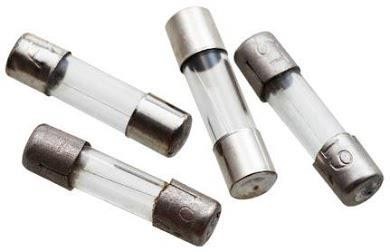
Cartridge Fuse
Rewirable Fuse
The most famous kit-kat fuse (also known as rewireable fuse) mostly used in industries and home electrical wiring for small current applications in Low Voltage (LV) systems.Rewireable fuse contains 2 basic parts. The inner fuse element as fuse carrier made of tinned copper, Aluminum, Lead etc and the base made of porcelain having the IN and OUT terminals which is used to be in series with the circuit to protect.
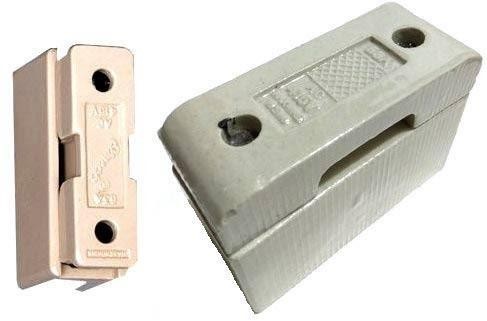
Rewirable Fuse
Resettable Fuses
Resettable fuse is a device, which can be used multiple times without replacing it. They open the circuit, when an over current event occurs and after some specific time they connect the circuit again. Polymeric positive temperature coefficient device (PPTC, commonly known as a resettable fuse, poly-switch or poly-fuse)
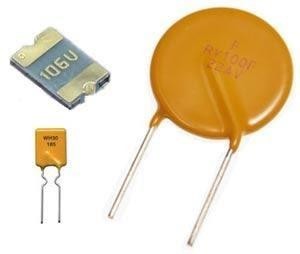
Resettable Fuse (PTC Fuse) Learn more
- Used in: Electronic devices and power supplies.
- Can reset automatically after the fault is removed.
- Polymeric material changes resistance with temperature.
Drop Out Fuse
Used in high-voltage outdoor applications, drops out when it blows for visible indication.
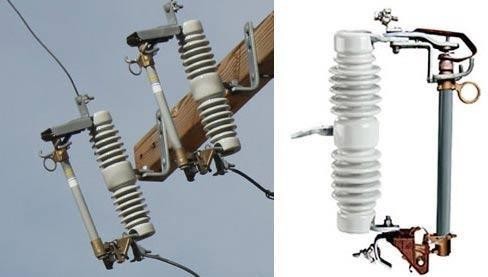
Automotive Fuse
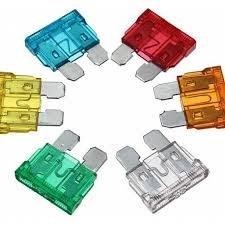
- Used in: Vehicles and automobiles.
- Structure: Plastic body with two metal prongs.
- Easy to plug in and remove.
📌 Summary Table
| Type | Used In | Feature |
|---|---|---|
| Cartridge Fuse | Homes, industry | Cylindrical, replaceable |
| Blade Fuse | Automobiles | Plug-in, color-coded |
| PTC Resettable Fuse | Electronics | Self-resetting |
| Fast Blow Fuse | Laptops, sensitive devices | Instant break |
| Slow Blow Fuse | Motors, transformers | Delay response |
| Thermal Fuse | Appliances | Heat-triggered |
| High Voltage Fuse | Substations | For >1500V systems |
| SMD Fuse | PCBs, gadgets | Very small, surface-mounted |
✅ Advantages of Fuses
• Simple and inexpensive
• Provides reliable protection against overcurrent
• Quick response to short circuits
• No maintenance required
⚠️ Disadvantages of Fuses
• Must be replaced after each operation
• Cannot be reused
• May not be suitable for complex systems requiring real-time control
🔌 Uses of Fuses
• Protection of household wiring and appliances
• Automotive electrical circuits
• Electronic devices and circuit boards
• Industrial equipment and machinery
• Power distribution systems